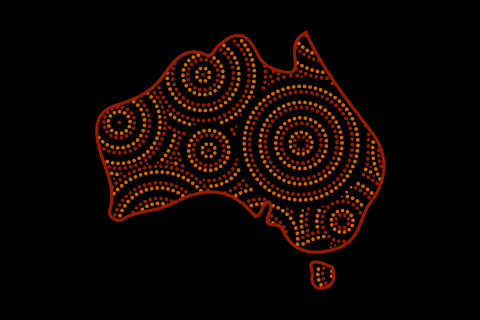Understanding what motivates you to engage in carbon farming is an important step in deciding your best pathway. You may be motivated to participate in carbon farming for one or more of the following reasons.
Meeting increasing demand from investors, creditors and supply chains for less emissions-intensive production
The Australian Government is improving the quality of climate-related financial disclosures to provide greater transparency and more comparable information about an entity’s exposure to climate-related financial risks and opportunities and climate-related plans and strategies.
This and other domestic and international initiatives (such as the Science-Based Targets Initiative) are increasing climate-related reporting requirements for investors, creditors and supply chains that, as a result, are increasingly preferring lower-emissions investments, transactions and suppliers.
Meeting increasing demand from consumers for more sustainable products
As the world shifts to a net zero emissions trajectory, it is likely that people will increasingly prefer lower-emissions agricultural products. For example, a 2023 study by McKinsey and NielsenIQ in the US found that products making environmental, social and governance (ESG) related claims averaged 28% cumulative growth from 2017 to 2022, compared to 20% growth for products that made no such claims over the same period. The study found that products that made ESG-related claims grew faster than those that didn’t, and it revealed, in many categories, a clear and material link between ESG-related claims and consumer spending.
Securing continued market access in the face of increasingly stringent climate-related requirements in trade agreements and potential future trade barriers
For example, Australia’s four largest beef export markets — Japan, the United States of America, China and South Korea — all have net zero emissions targets to be met by around mid-century. Adopting carbon farming activities and practices in our beef production would strengthen our existing reputation for clean and safe produce, enabling Australian producers to prosper in emerging markets for low-carbon meat products.
In 2023, Deloitte Access Economics undertook a global scan of carbon taxes, including the European Union’s Carbon Border Adjustment Mechanism, and investigated what this means for Australian agriculture. It found that if agricultural products were to be included in the mechanism in the future, Australian agricultural output could be reduced by a total of $1 billion between 2026 and 2040 in present value terms. Emerging climate-related trade demands will be better met with agriculture products that are less emissions-intensive.
Diversifying income streams by taking advantage of increasing demand across the economy for carbon offsets
Farmers and land managers can participate in carbon markets (such as the ACCU Scheme) to diversify their income streams. However, they need to be aware that selling carbon credits means they can’t claim the same benefit towards their (or their supply chain’s) low-emissions claims, which would limit their capacity to meet other purposes or motivations for participating in carbon farming.
Supporting the agriculture sector to meet climate mitigation goals, including improving industry’s resilience to climate change
As Topic 1 explained, Australian agriculture industry bodies have ambitious climate targets driven mainly by emerging domestic and international market requirements. Examples include the red meat industry’s carbon neutral by 2030 target, Dairy Australia’s aim for a 30% reduction in emissions intensity across the industry in the same timeframe and wool production’s move towards carbon neutrality. Meeting these targets relies on emissions reductions and carbon storage by producers.
Supporting Australia to meet its emissions reduction commitments
The Australian Government has committed to reducing Australia’s emissions by 43% below 2005 levels by 2030 and to reach net zero emissions by 2050. It is developing a plan to guide Australia’s transition to net zero emissions by 2050, as well as six sectoral plans, including one for agriculture and land, to support the net zero plan.
Australia is a signatory to the Global Methane Pledge, a voluntary global commitment to reduce global methane emissions by at least 30% below 2020 levels by 2030. The pledge commits Australia to comprehensive domestic action to achieve this target, including seeking abatement of agriculture emissions through technological innovation as well as incentives and partnerships with farmers.
Achieving economic, social and environmental co-benefits
Carbon farming co-benefits that may be of interest to farmers and land managers include: improving biodiversity, soil quality, water quality and farm productivity; reducing erosion and run-off; and enhancing cultural connection and opportunity for social and economic advancement.
Activity: What is your motivation?
What is your purpose or motivation for doing carbon farming? And what factors did you weigh up when deciding your purpose or motivation?
Activity: A tale of 2 purposes
This case study presents 2 carbon farming projects, each with different purposes. As you read about each of the following projects, reflect on whether either of these purposes aligns with your motivations for a carbon farming project.
Victorian beef producer Julian Carroll participated in Agriculture Victoria’s On-Farm Emissions Action Plan Pilot. In the video, Reducing emissions and being feed additive ready (3:37 minutes), he explains how his farm reduced emissions by improving its feeding systems.
The Nyaliga Aboriginal Corporation manages a savanna fire carbon project across 6,400 km2 of traditional Country a short distance from Wyndham in Western Australia. In the Clean Energy Regulator’s article Fighting fire with fire, board member and Elder Kathleen O'Reeri explains the corporation’s ACCU Scheme project, which started in 2017. The project is improving the landscape, earning ACCUs, protecting sacred places, making areas for food gathering and hunting and providing jobs and fire training opportunities to the Nyaliga people.

